Sürücü Teorisi e-Sınavı 1
01/50
1.Bu işaret sürücüleri ne hakkında bilgilendiriyor?
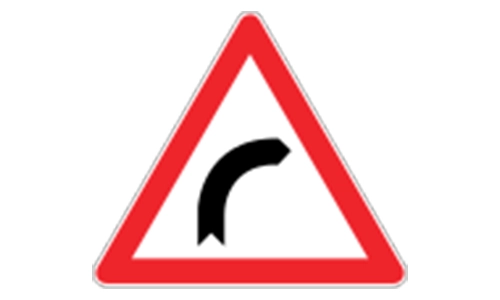
Yol orta bir açıyla sağa doğru kıvrılmaktadır. Sürücüler hafifçe yavaşlamalı ve direksiyonu sabit tutmalıdır. Şeridinizde kalın ve gerekirse düzeltmeye hazır olun.
01/50
İlerleme
Sürücü Teorisi e-Sınavı 1
02/50
2.What does this sign instruct the driver to do?
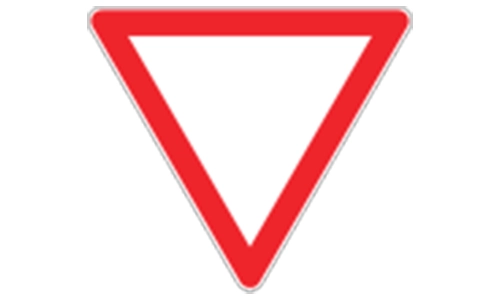
The Give way sign tells drivers to yield to main road traffic. It prevents crashes at junctions. Drivers must let others pass first.
02/50
İlerleme
Sürücü Teorisi e-Sınavı 1
03/50
3.What does this sign indicate?
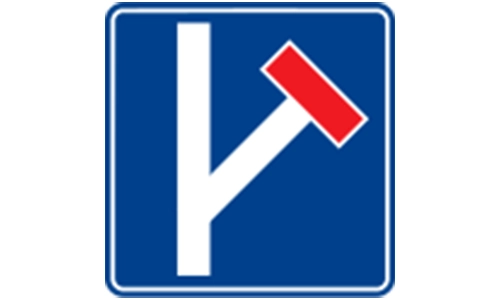
This tells drivers that the road branching off to the right does not go through. Dont enter unless youre visiting a destination on that road.
03/50
İlerleme
Sürücü Teorisi e-Sınavı 1
04/50
4.What does this sign mean for drivers?

You may stop briefly to drop off or pick up passengers, but parking the vehicle is not allowed at any time.
04/50
İlerleme
Sürücü Teorisi e-Sınavı 1
05/50
5.What does this sign indicate?
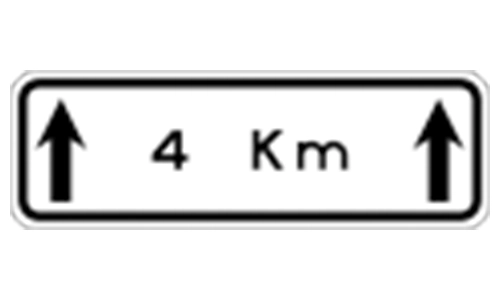
The road condition, restriction, or regulation applies for the next 4 kilometers from that point.
05/50
İlerleme
Sürücü Teorisi e-Sınavı 1
06/50
6.At an unsignaled intersection, who yields when two vehicles arrive at the same time?
In Turkey, priority at unsignaled intersections is given to vehicles approaching from the right. This rule avoids confusion in the absence of traffic signs.
06/50
İlerleme
Sürücü Teorisi e-Sınavı 1
07/50
7.What is the general speed limit for passenger cars within urban residential zones in Turkey?
In Turkey, the general speed limit for passenger vehicles in urban areas, including residential zones, is 50 km/h unless otherwise posted. This limit is set to ensure pedestrian safety and to reduce traffic collisions in dense areas with frequent crosswalks and intersections.
07/50
İlerleme
Sürücü Teorisi e-Sınavı 1
08/50
8.When is it legal to change lanes on a Turkish motorway?
Lane changes are permitted only when lane markings allow (typically dashed lines) and when it is safe to do so. Motorways are high-speed roads, so sudden or illegal lane changes can cause severe accidents.
08/50
İlerleme
Sürücü Teorisi e-Sınavı 1
09/50
9.Where is it illegal to park in Turkey, even temporarily?
Stopping or parking on pedestrian crossings is strictly prohibited as it obstructs the visibility and path of pedestrians, creating serious safety risks. Violators are subject to fines and possible vehicle towing.
09/50
İlerleme
Sürücü Teorisi e-Sınavı 1
010/50
10.When is it legal to use your horn in urban areas in Turkey?
In Turkey, horn use in urban areas is restricted. Its only permitted when necessary to prevent an accident. Unnecessary honking, especially in city centers, is punishable by fine.
010/50
İlerleme
Sürücü Teorisi e-Sınavı 1
011/50
11.Is holding a mobile phone while driving legal in Turkey?
Using a handheld phone while driving is strictly prohibited in Turkey. It distracts the driver’s attention and significantly increases accident risk.
011/50
İlerleme
Sürücü Teorisi e-Sınavı 1
012/50
12.What should you do when a pedestrian begins to cross at a marked crosswalk?
Turkish law gives pedestrians full right of way at marked crossings. Drivers must stop completely and allow safe passage. Honking or rushing is illegal.
012/50
İlerleme
Sürücü Teorisi e-Sınavı 1
013/50
13.What happens when you drive through a red light in Turkey?
Running a red light results in a fine and demerit points. Repeated offenses can lead to suspension or court orders.
013/50
İlerleme
Sürücü Teorisi e-Sınavı 1
014/50
14.What must drivers do before starting to drive in Turkey?
Seatbelt use is mandatory before movement. It significantly reduces injury risk during accidents and is checked during police controls.
014/50
İlerleme
Sürücü Teorisi e-Sınavı 1
015/50
15.What is the legal blood alcohol limit for private car drivers in Turkey?
For private vehicle drivers, the legal limit is 0.5u2030. Exceeding this can lead to fines or license suspension. Limits are stricter for professional drivers.
015/50
İlerleme
Sürücü Teorisi e-Sınavı 1
016/50
16.What is the core goal of defensive driving?
Defensive driving is about preventing accidents by identifying and responding to hazards early. It emphasizes awareness, caution, and proactive reactions to reduce risk.
016/50
İlerleme
Sürücü Teorisi e-Sınavı 1
017/50
17.What does responsible road behavior primarily focus on?
Responsible road users follow rules and respect others’ rights. This reduces conflict and ensures safety for all road users, including drivers, passengers, cyclists, and pedestrians. Adhering to regulations promotes a cooperative and predictable driving environment for everyone.
017/50
İlerleme
Sürücü Teorisi e-Sınavı 1
018/50
18.What should you do when driving in heavy rain?
In heavy rain, visibility is significantly reduced, and road surfaces become slippery. Slowing down reduces the risk of hydroplaning and allows more time to react. Using low-beam headlights makes your vehicle visible to others, which is crucial for preventing collisions.
018/50
İlerleme
Sürücü Teorisi e-Sınavı 1
019/50
19.What is the first step if your vehicle breaks down on a Turkish highway?
Turkish traffic rules require drivers to immediately signal emergencies with hazard lights and, if possible, move the vehicle to the furthest right shoulder or emergency lane. This clears the main lanes for traffic and ensures your safety from ongoing traffic.
019/50
İlerleme
Sürücü Teorisi e-Sınavı 1
020/50
20.What kind of attitude helps a driver stay alert, composed, and ready for unexpected road situations?
A calm and focused mindset helps drivers make rational decisions, respond effectively to unexpected hazards, and maintain overall safety on the road. It promotes clear thinking and reduces impulsive reactions, which are vital for defensive driving.
020/50
İlerleme
Sürücü Teorisi e-Sınavı 1
021/50
21.What is the first step in hazard perception while driving?
Constantly scanning the road ahead helps drivers detect potential dangers, such as sudden stops, pedestrians, or changing road conditions, early. Good drivers are always alert to changes in traffic, weather, and road conditions to anticipate and react safely.
021/50
İlerleme
Sürücü Teorisi e-Sınavı 1
022/50
22.What is the first step if your vehicle breaks down on a highway in Turkey?
In Turkey, as in most places, the immediate priority after a breakdown on a highway is to turn on your hazard lights to warn other drivers and safely pull your vehicle to the furthest right shoulder or emergency lane. This minimizes obstruction and reduces the risk of further collisions.
022/50
İlerleme
Sürücü Teorisi e-Sınavı 1
023/50
23.Which gear should be used to save fuel during acceleration?
Shifting to higher gears as soon as possible while still maintaining adequate power for acceleration reduces engine RPM, which in turn reduces fuel consumption. This technique is known as short shifting and promotes smoother, more efficient driving.
023/50
İlerleme
Sürücü Teorisi e-Sınavı 1
024/50
24.How often should drivers check their mirrors?
Regular mirror checks, ideally every 5-8 seconds or more frequently in busy traffic, are crucial for maintaining situational awareness. This habit keeps you informed of surrounding traffic, helping to prevent surprises and allowing you to react to changes in vehicles behind or beside you.
024/50
İlerleme
Sürücü Teorisi e-Sınavı 1
025/50
25.What should a driver expect at this sign?
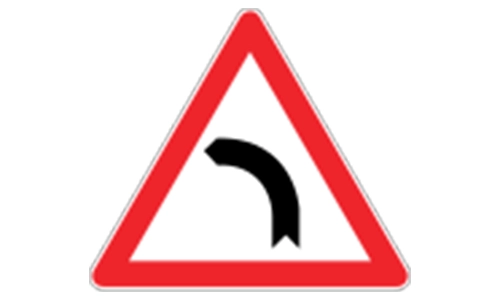
Sola doğru yumuşak bir viraj geliyor. Viraja girmeden önce hızınızı ayarlayın. Ani hareketler yapmadan viraj boyunca kontrolü koruyun.
025/50
İlerleme
Sürücü Teorisi e-Sınavı 1
026/50
26.What should a driver do at this sign?
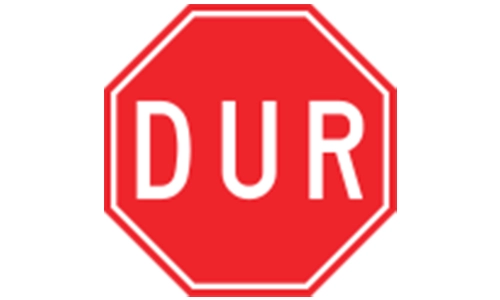
The Stop sign tells drivers to halt fully before continuing. It is red and octagonal. Drivers must obey even if no vehicles are seen.
026/50
İlerleme
Sürücü Teorisi e-Sınavı 1
027/50
27.What does this sign warn about?
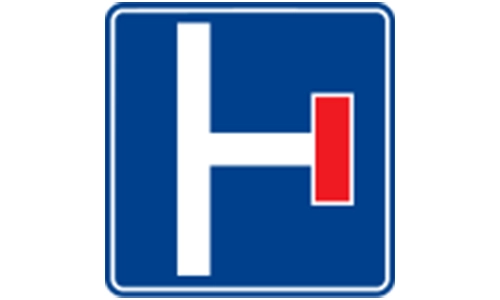
It means the road to the left is a dead end. Avoid turning left unless its your intended stop. No through traffic is allowed.
027/50
İlerleme
Sürücü Teorisi e-Sınavı 1
028/50
28.What does this sign indicate?
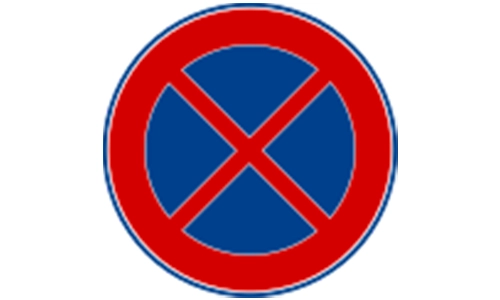
You are not allowed to stop or park your vehicle for any reason. This includes brief stops like waiting or dropping someone off.
028/50
İlerleme
Sürücü Teorisi e-Sınavı 1
029/50
29.What does this sign mean?
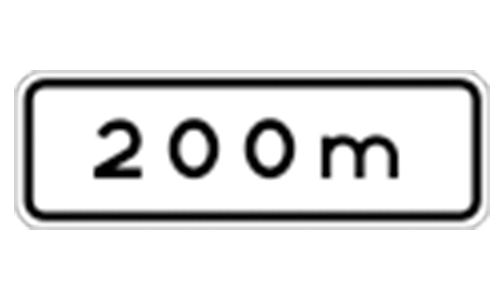
Tells drivers that the upcoming condition (e.g., stop, curve, or sign) will begin 200 meters from here.
029/50
İlerleme
Sürücü Teorisi e-Sınavı 1
030/50
30.When turning left at an intersection with no signal, who has the right of way?
Left-turning vehicles must yield to oncoming straight or right-turning traffic. This helps prevent conflicts and ensures safe crossing paths.
030/50
İlerleme
Sürücü Teorisi e-Sınavı 1
031/50
31.On highways (otoyol), what is the maximum speed limit for motorcycles in Turkey?
Motorcycles in Turkey are allowed to travel up to 120 km/h on divided highways or motorways (otoyol). However, riders must wear helmets, and speed must be adjusted for weather and road conditions. Exceeding this limit is subject to fines and penalty points.
031/50
İlerleme
Sürücü Teorisi e-Sınavı 1
032/50
32.What should a driver do before changing lanes in Turkey?
Turkish traffic law requires drivers to signal intentions clearly, check mirrors, and glance over their shoulder (blind spot check) to ensure the lane is clear before making any lateral movement.
032/50
İlerleme
Sürücü Teorisi e-Sınavı 1
033/50
33.How far from a pedestrian crossing must you park your vehicle in Turkey?
Turkish traffic law mandates a minimum distance of 5 meters from pedestrian crossings to ensure clear visibility for both drivers and pedestrians. Parking too close creates blind spots and increases accident risk.
033/50
İlerleme
Sürücü Teorisi e-Sınavı 1
034/50
34.What is the recommended daytime headlight use outside urban areas in Turkey?
Turkish law requires drivers to keep dipped headlights on even during the day on highways and interurban roads to improve visibility and prevent collisions.
034/50
İlerleme
Sürücü Teorisi e-Sınavı 1
035/50
35.What is the penalty for using a handheld phone while driving in Turkey?
Drivers using handheld phones face a monetary fine and license penalty points. Turkish authorities treat it as a serious traffic violation
035/50
İlerleme
Sürücü Teorisi e-Sınavı 1
036/50
36.When cyclists are legally riding in a group ahead, what must you do?
Cyclists may ride side by side on some roads. Drivers must provide safe distance and pass only when conditions allow. Impatience can lead to accidents.
036/50
İlerleme
Sürücü Teorisi e-Sınavı 1
037/50
37.When caught using a mobile phone while driving, what penalty applies?
Turkey enforces strict mobile phone use rules. You receive a fine and points on your license if caught.
037/50
İlerleme
Sürücü Teorisi e-Sınavı 1
038/50
38.When is it legal to drive without wearing a seatbelt?
Seatbelts must always be worn unless a medical certificate provides an exemption. There are no legal exceptions for short trips.
038/50
İlerleme
Sürücü Teorisi e-Sınavı 1
039/50
39.When does the alcohol limit become zero in Turkey?
Taxi, bus, and truck drivers must maintain 0.0u2030 alcohol levels. Even minimal alcohol presence is punishable. Safety responsibility is higher in commercial transport.
039/50
İlerleme
Sürücü Teorisi e-Sınavı 1
040/50
40.Why is maintaining a safe following distance important?
A safe following distance gives drivers more time to respond if the vehicle in front suddenly stops. It helps prevent rear-end collisions.
040/50
İlerleme
Sürücü Teorisi e-Sınavı 1
041/50
41.How should pedestrians be treated at crossings in Turkey?
Turkish road laws, like those in many countries, require drivers to give priority to pedestrians at marked crossings. This action is crucial to prevent accidents and ensure the safety of pedestrians. Always be prepared to stop and wait until pedestrians have safely cleared the crossing.
041/50
İlerleme
Sürücü Teorisi e-Sınavı 1
042/50
42.Why is it risky to brake suddenly on a wet road?
Sudden braking on a wet road can cause tires to lose traction, leading to skidding or hydroplaning. This results in a loss of vehicle control. Controlled, gradual braking is safer in wet conditions as it allows the tires to maintain grip with the road surface.
042/50
İlerleme
Sürücü Teorisi e-Sınavı 1
043/50
43.What should you place behind your car after a breakdown?
A warning triangle or two, depending on the situation and road type must be placed at least 30 meters behind the car in Turkey to alert approaching drivers of the stopped vehicle. This gives other drivers sufficient time to react and avoid a collision, especially at night or in poor visibility.
043/50
İlerleme
Sürücü Teorisi e-Sınavı 1
044/50
44.How does stress affect driving ability?
Stress can significantly impair a drivers ability to concentrate, leading to distractions and slower reaction times. It can also cause impulsive or aggressive behavior, increasing the chance of accidents. Managing stress before and during driving is crucial for safety.
044/50
İlerleme
Sürücü Teorisi e-Sınavı 1
045/50
45.What type of hazard is a pedestrian approaching a crosswalk?
A developing hazard is something that is not an immediate danger but has the potential to become one. A pedestrian near a crosswalk could suddenly step into traffic, requiring the driver to be prepared to react, making it a developing hazard.
045/50
İlerleme
Sürücü Teorisi e-Sınavı 1
046/50
46.Where should you place the warning triangle in the event of a breakdown?
Turkish regulations and international standards require placing a reflective warning triangle at least 30 meters behind the broken-down vehicle on a highway. This provides ample warning to oncoming traffic, especially at higher speeds, to reduce the risk of a rear-end collision.
046/50
İlerleme
Sürücü Teorisi e-Sınavı 1
047/50
47.How does maintaining steady speed help eco-driving?
Fluctuating speeds with frequent acceleration and braking wastes a significant amount of fuel. Maintaining a steady pace, especially on highways, avoids these fuel-consuming actions and contributes greatly to overall fuel efficiency and smooth driving.
047/50
İlerleme
Sürücü Teorisi e-Sınavı 1
048/50
48.What is the main benefit of good navigation?
Effective navigation helps drivers choose efficient routes, avoid congested areas, and minimize unnecessary stops or detours. This not only saves time and fuel but also reduces stress and enhances overall driving safety by allowing for more consistent driving.
048/50
İlerleme
Sürücü Teorisi e-Sınavı 1
049/50
49.What does this sign warn of?
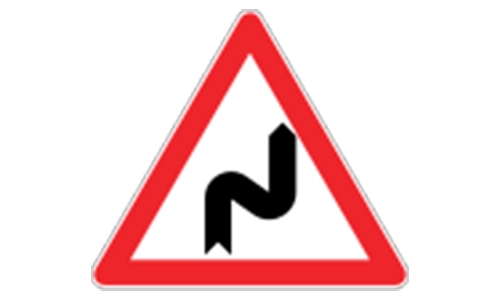
Bu, önce sağa, sonra sola doğru bir çift viraj uyarısı vermektedir. Güvenli bir hızda sürün ve her ikisinde de yumuşak bir şekilde direksiyonu kırın. Ani hareketler kontrol kaybına neden olabilir.
049/50
İlerleme
Sürücü Teorisi e-Sınavı 1
050/50
50.What does this sign indicate?
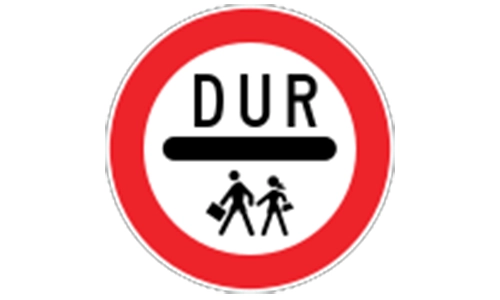
The Stop, children crossing sign is used near schools. Drivers must stop when children cross. It helps ensure safety for young pedestrians. Alertness is critical in these zones.
050/50
İlerleme
- 1
- 2
- 3
- 4
- 5
- 6
- 7
- 8
- 9
- 10
- 11
- 12
- 13
- 14
- 15
- 16
- 17
- 18
- 19
- 20
- 21
- 22
- 23
- 24
- 25
- 26
- 27
- 28
- 29
- 30
- 31
- 32
- 33
- 34
- 35
- 36
- 37
- 38
- 39
- 40
- 41
- 42
- 43
- 44
- 45
- 46
- 47
- 48
- 49
- 50
0 Doğru
x 0 Yanlış
- Geçme Puanı 80%

İlk Denemenizde DMV Sınavında Başarılı Olun
Sınırsız deneme sınavı
1000'den Fazla Sınav Benzeri Soruya Erişim Sadece $3
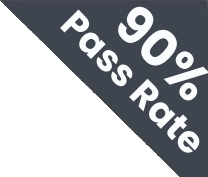
DMV Sınavında Başarılı Olun
İlk Denemeniz

 Pass the Exam easily with Premium Practice Tests | Unlock All with 7 Days Plan
Pass the Exam easily with Premium Practice Tests | Unlock All with 7 Days Plan  Offer Ends in
Offer Ends in
